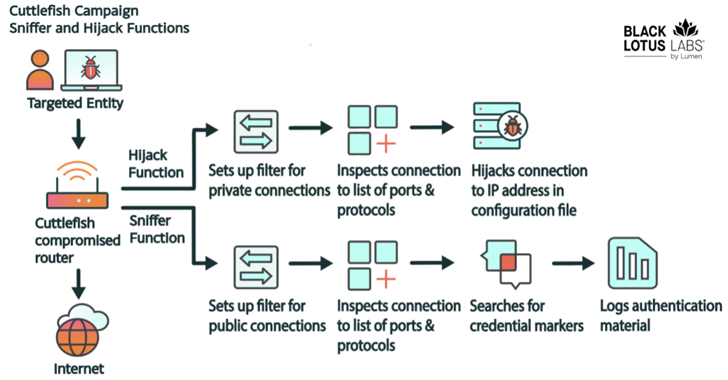In order to conceal malicious processes, a new Linux rootkit malware dubbed, ‘Syslogk’ has been hacking computers by using specially crafted “magic packets” and specially crafted exploits to wake up a hidden backdoor that is hidden on the machine.
The new malware was discovered by researchers at the antivirus firm Avast. Based on an open-source kernel rootkit known as Adore-Ng, the Syslogk rootkit is heavily influenced.
It should be noted that in contrast to most rootkits that can be detected, the kernel rootkit can disguise entire kernel modules as well as processes and files. Furthermore, the rootkit allows authenticated processes in user mode to interact with it in order to control it to a certain extent.
Loading Backdoor
A rootkit is a malware that is installed in the Operating System’s kernel as a kernel module. Now to filter out the information that they don’t want to be exhibited, they intercept the legitimate Linux commands after being installed on the target machine.
Here below we have mentioned all the information that it hides:-
- Files
- Folders
- Processes
If you install SyslogK as a kernel module for the first time, the module will remove itself from the installed module list in an attempt to avoid manual inspection. There is only one indication that it is present and that is the /proc file system, which displays the exposed interface.
The rootkit has the ability to conceal the malicious files it drops on the server as well as other functions that allow it to hide the malicious directories it drops.
In addition to hidden payloads, Avast also found a Linux backdoor called Rekoobe that was hidden in the code. Upon being installed on compromised systems, this backdoor remains dormant for a long time until a “magic packet” from the threat actor enables it to become active.
There is a program called Rekoobe that is based on TinySHell, which is an open-source program. By using it, the attacker is able to gain access to, on the compromised machine, a command-line console that will allow the attacker to access it remotely.
Further Analysis
In particular, Syslogk is engineered to pick up TCP packets containing source port 59318 so that the Rekoobe malware can be launched. If you want to stop the payload, however, you’ll need the TCP packet to meet the following requirements:-
- 0x08 is the value assigned to the reserved field of the TCP header
- The source port should be between 63400 and 63411
- It should be noted that both the source address and the port that is set in the magic packet that was sent to start Rekoobe are the same.
- A key is contained within the magic packet (“D9sd87JMaij”), which is hard-coded into the rootkit and is located in the magic packet in a variable offset.
Regular users don’t see Linux systems much, but they are vital to some of the most important corporate networks today. Threat actors are dedicating the necessary time and effort to build custom malware for the architecture, so it appears to be a dangerous and advantageous venture.








